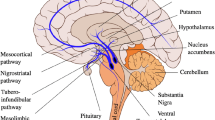Abstract
At present, there are no quantitative, objective methods for diagnosing the Parkinson disease. Existing methods of quantitative analysis by myograms suffer by inaccuracy and patient strain; electronic tablet analysis is limited to the visible drawing, not including the writing forces and hand movements. In our paper we show how handwriting analysis can be obtained by a new electronic pen and new features of the recorded signals. This gives good results for diagnostics.
Preview
Unable to display preview. Download preview PDF.
Similar content being viewed by others
References
Pahwa, R., Lyons, K.E., Koller, W.C.: Handbook of Parkinson’s Disease: Neurological Disease & Therapy, 3rd edn. Marcel Dekker Inc., New York (2003)
Ceballos-Baumann, A., Conrad, B.: Bewegungsstörungen. Georg Thieme, Stuttgart (2005)
Merletti, R., Parker, P.M.: Electromyography: Physiology, Engineering and Non-Invasive Applications. John Wiley & Sons Inc, New York (2004)
Marquardt, C., Mai, N.: A computational procedure for movement analysis in handwriting. J. Neurosci. Methods 52, 39–45 (1994)
Pullmann, S.: Spiral Analysis: A New Technique for Measuring Tremor With a Digitizing Tablet. Movement Disorders 13(Suppl.3), 85–89 (1998)
Eichhorn, T.E., Gasser, T., Mai, N., Marquardt, C., Arnold, G., Schwarz, J., Oertel, W.H.: Computational analysis of open loop handwriting movements in Parkinson´s disease: a rapid method to detect dopaminergic effects. Mov. Disord. 11, 289–297 (1996)
Ingvarsson, P.E., Gordon, A.: Coordination of Manipulative Forces in Parkinson’s Disease. Exp. Neurology 145, 489–501 (1997)
Fellows, S., Noth, J.: Grip Force Abnormalities in De Novo Parkinson’s Disease. Movement Disorders 19(5), 560–565 (2003)
Fellows, S.J., Noth, J., Schwarz, M.: Precision grip and Parkinson´s disease. Brain 121, 1771–1784 (1998)
Pincus, S.M.: Appoximative entropy as a measure of system complexity. Proc.Natl. Acad. Sci. USA 88, 2297–2301
Costa, M., Goldberger, A.L., Peng, C.-K.: Multiscale entropy analysis of biological signals. Physical Review E 71, 021906 (2005)
Author information
Authors and Affiliations
Editor information
Editors and Affiliations
Rights and permissions
Copyright information
© 2006 Springer-Verlag Berlin Heidelberg
About this paper
Cite this paper
Ünlü, A., Brause, R., Krakow, K. (2006). Handwriting Analysis for Diagnosis and Prognosis of Parkinson’s Disease. In: Maglaveras, N., Chouvarda, I., Koutkias, V., Brause, R. (eds) Biological and Medical Data Analysis. ISBMDA 2006. Lecture Notes in Computer Science(), vol 4345. Springer, Berlin, Heidelberg. https://doi.org/10.1007/11946465_40
Download citation
DOI: https://doi.org/10.1007/11946465_40
Publisher Name: Springer, Berlin, Heidelberg
Print ISBN: 978-3-540-68063-5
Online ISBN: 978-3-540-68065-9
eBook Packages: Computer ScienceComputer Science (R0)




